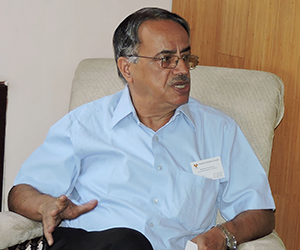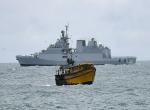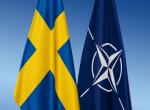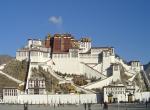Vietnam’s Prime Minister Nguyen Xuan Phuc, after his visit to New Zealand and Australia in mid-March also attended the Australian-ASEAN Summit, the first ever such exercise being undertaken by Canberra. The Vietnamese leader’s visit took place after Australian PM Malcolm Turnbull’s visit to Hanoi in November last year. Moreover, Governor General of Australia, Peter Cosgrove, would also be visiting Vietnam in May 2018, thus underlining the increasing frequency of high level visits.
Over the years the bilateral relationship has undergone iterations from ‘comprehensive partnership’ in 2009 to ‘enhanced partnership’ in 2015 and during the PM Phuc’s visit it has been now elevated to ‘strategic partnership’. In the evolving strategic milieu of South East Asia such a development is quite significant. It underscores the political will of both Vietnam and Australia to intensify their diplomatic engagement, and strengthen defence and security cooperation besides taking steps to enhance the bilateral trade and cultural exchanges.
As part of its multi-vector foreign and security policies Hanoi has forged such strategic partnerships with many countries like the US, India, Japan and others. Development of ties with Australia should also be seen in the background of the recent visit of US Aircraft Carrier to Danang port of Vietnam and President Tran Dai Quang’s visit to India with whom Vietnam has upgraded its relationship to comprehensive strategic partnership. This is also the 45th year of establishment of diplomatic relations between Vietnam and Australia and thus time to take stock of achievements and inadequacies in the evolving relationship.
The defence and security cooperation has been an important element of the bilateral dialogue for last two decades. Vietnam and Australia share similar perceptions on security challenges in the region and thus have been on the path of strengthening their defence relationship since 1999. In November 2010, a Memorandum of Understanding of on defence exchanges was signed that has enabled both sides to pursue defence cooperation in areas of maritime security, port visits by the naval ships, military training as also training in UN Peace Keeping Operations of the Vietnamese defence forces by Australia. Such training will come in handy for the coming deployment of Vietnamese troops in South Sudan for UN Peacekeeping mission.
At the higher level there has been regular joint Foreign Affairs and Defence Strategic dialogue at Deputy-Secretary/Vice-Minister level since 2012. There also visits by senior defence officials involving discussions on counter-terrorism, transnational crimes and sharing of views on the evolving strategic and security dynamics in the region in particular and at the global level in general. The fifth in the series of such defence and strategic dialogues was held in September last year in Canberra. During the visit of PM Phuc to Australia the bilateral defence and security cooperation has been further strengthened as reflected in the Joint Statement released after the visit on 15 March.
Both sides also have converging views on promoting peace, stability, and freedom of navigation in the region, settling disputes by peaceful measures in line with international law, including the 1982 UN Convention on the Law of the Sea (UNCLOS) and through appropriate ASEAN led-mechanisms. Thus, both sides support ASEAN’s centrality besides working together in a variety of ASEAN-led mechanisms, and have also committed to strictly implementing the Declaration on the Conduct of Parties in the East Sea (DOC) while working towards a legally-binding and an effective Code of Conduct in the East Sea. Added to above is the defence cooperation in the multilateral context of ASEAN Defence Ministers Meeting Plus, where both the countries’ armed forces have been cooperating and taking part in joint military exercises that are geared towards improving inter-operability and addressing concerns especially in the non-traditional areas of security.
A higher degree of momentum in endeavours to continually enhance the strategic partnership is likely to be maintained in the coming years. Vietnam has been looking to upgrade its indigenous defence industry where Australian cooperation would be of much help. There are many other areas like cyber security, sharing of intelligence and maritime domain awareness where there would be a win-win situation for both the sides.
Further, Vietnam’s economic growth has been generally on upward trajectory with the rate of growth for the year 2018 expected to be at 6.7 percent as forecast by the World Bank. The bilateral trade between Vietnam and Australia for 2016-2017 was 11.8 billion dollars. According to one estimate Vietnam is Australia's fifteenth largest trading partner, and Australia is Vietnam's seventh largest trading partner. For the last five years or so Vietnam has been one of Australia's fastest-growing trade markets in the ASEAN region, averaging over 10 percent annual growth. But it can also be said that the potential for bilateral trade and investments remains underexploited and many obstacles that come in the way need to be studied and overcome. Evidently, there is a need to remove tariff barriers to enhance the flow of trade and commerce.
Both countries are members of Trans Pacific Partnership that is reaching a finality without the US; similarly, both are also members of Regional Comprehensive Economic Partnership that includes the ASEAN and six other regional countries. Conclusion of both partnerships is expected to give a fillip to the bilateral and regional trade and commerce. Australia and Vietnam are also parties to the agreement establishing the ASEAN–Australia–New Zealand Free Trade Area (AANZFTA) which entered into force on 1 January 2010 and has been instrumental in imparting momentum to the trilateral trade. Strategic, security and economic cooperation is further supplemented by expanding people-to-people and cultural exchanges between both countries. Vietnamese are the sixth largest community domiciled in Australia; there are about 300,000 Vietnamese diaspora in Australia and on an average 30,000 Vietnamese students enrol in Australian educational institutions every year. Though there has been increased bilateral tourist traffic there is a need to further enhance the air connectivity.
From both Indian and regional perspective, growing strategic, security and economic cooperation between Australia and Vietnam would contribute to the regional peace, stability and prosperity. Vietnam is a key pillar of regional security in the ASEAN architecture, and thus there is also a need to explore the possibility of evolving trilateral initiatives between Vietnam, Australia and third countries that have converging views on the evolving strategic and security dynamics in the region.
(Views expressed are of the author and do not necessarily reflect the views of the VIF)
Image source: http://vietnam.embassy.gov.au/











Post new comment